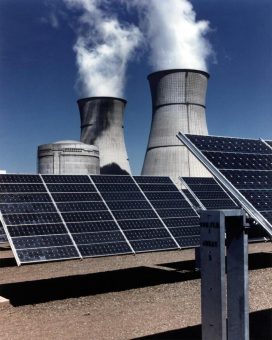
South Africa’s grid is dominated by coal. According to the Council for Scientific and Industrial Research (CSIR), published in its latest “Statistics of utility-scale power generation in South Africa in 2020″ report, coal still accounts for a whopping 83.5 percent of power generation.
South Africa’s coal power plants provided 184,4 TWh of electricity in 2020. Nuclear energy contributed 11.5 TWh (5,2 percent), and for the first time ever, variable renewable energy surpassed nuclear, contributing 12,4 TWh (5,6 percent). The rest was met by other sources, including diesel, hydro, and pumped storage plants.
In total, South Africa’s power plants generated 227 TWh of electricity. Variable renewable energy refers to utility-scale wind, solar PV, and concentrating solar power (CSP) — excluding hydro.
Nuclear’s contribution comes from Eskom’s Koeberg nuclear power station. The Koeberg plant is the only nuclear power station in Africa. It is a pressurised water reactor (PWR). According to Eskom, Koeberg has the largest turbine generators in the Southern Hemisphere and is the most southerly-situated nuclear power station in the world. It has two 970 MW units giving an installed capacity of 1.940 MW.
South Africa has been gradually adding utility-scale wind, solar PV, and concentrating solar power (CSP) for years, increasing the installed capacity from 467 MW in 2013. to 5.027 MW by the end of 2020. 414 MW of wind and 558 MW of solar PV were added in 2020. alone.
Notably, South Africa’s electricity production has been dropping since 2011. from 250 TWh to 227 TWh in 2020. Eskom power plants’ average annual energy availability factor dropped to 65 percent in 2020. This has resulted in Eskom implementing a power rationing programme to manage demand. The situation got so bad that in 2020. there was a total of 859 hours of loadshedding in 2020. which is 10 percent of the year.
Most of the loadshedding fell into the Stage 2 category. Eskom’s loadshedding programme is structured in “stages” in which Eskom sheds a certain quantum of load from the grid to stabilise the grid. Depending on the severity of the crisis, loadshedding is implemented in stages from Stage 1 to Stage 8, where Stage 1 sheds 1.000 MW of load from the grid and Stage 8 means removal of 8.000 MW of load from the grid. Loadshedding is implemented over 2-hour or 4-hour blocks on a rotational basis depending on the severity of the crises. Stage 8, however, means most consumers will experience a blackout for about 12 hours.
More:
Distributed solar at scale in the commercial and industrial sectors can play a big role in addressing the shortfall. Incentivising and accelerating the penetration of solar systems on rooftops and carports can help quickly bridge the generation gap.
Warehouses, schools, universities, and farms, amongst others, can host PV plants capable of producing excess electricity that can be fed into the grid and “transported” for a reasonable charge to where the demand is greater under corporate PPA programmes.
This can unlock a new revenue stream for the utility company for its already exiting transmission infrastructure and provide clean electricity for energy intensive sites such as data centres, smelters, large factories, and mines.
Source: Clean Technica



